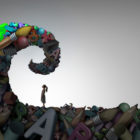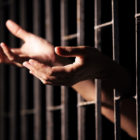
Role of Guns Not Tracked For LGBT Community
|
Today, Synthia Roy works at a tattoo parlor in Jacksonville, Fla., she does set design and makeup for horror films and recently produced her second movie.
Juvenile Justice Information Exchange (https://jjie.org/author/jjie-org/page/4/)

Today, Synthia Roy works at a tattoo parlor in Jacksonville, Fla., she does set design and makeup for horror films and recently produced her second movie.

It started with a simple question two months ago: Who are the youth in detention who are particularly susceptible to the coronavirus, and what is being done to get them out?

From the time she adopted Anthony, at age 4, Wendy Tonker knew he was special.
He was special because he was diagnosed with autism, ADHD and an intellectual disability.
Anthony, now 21, has been enrolled in Durham Public Schools’ (DPS) Exceptional Children Services (EC) program since elementary school. “I have been fighting with DPS EC for a decade now,” Tonker said. “They have horrifically underserved my son.”
Not all students process information identically, respond to their environments the same way or can control their behavior with the same restraint. Yet they are held to the same standard punishment system in school. “Someone who might have an attention deficit disorder and can’t stay still is standing up in class, walking around and is distracting the teacher; that person could be charged with disorderly conduct at school just from the definition of the law,” said Eric Zogry, with the North Carolina Office of the Juvenile Defender.

As the coronavirus began spreading in the United States, and grassroots youth activists got wind of the enormous risks as well as the precautions needed to protect people — social distancing, masks, frequent cleansing — they began to take action.

The fast-moving COVID-19 pandemic is shining a light on the vulnerability of youth in our nation’s approximately 2,000 juvenile correctional facilities who face daily threats to their safety and well-being.

As North Carolina began to send 16- and 17-year-olds to its juvenile justice system for the first time, year one was meant to be instructive.

In January, Sharral Dean, a therapist at the Family Counseling Center of Central Georgia, was seeing about 30 young clients a week. At any given time, five to seven of them were what Dean calls “at risk” — more likely to experience violence at home, at higher risk for depression, anxiety, fighting in school and entering the juvenile justice system.

Art is subversive. It has a history of undermining the status quo and of transforming perceptions.

Two months ago, her son, now 20, had spent the weekend on furlough, being a regular kid instead of a youth locked up in one of Louisiana’s juvenile detention centers. While an ankle monitor measured his compliance with orders to stay at home, he’d found joy for three days in simple activities like mowing the yard and eating boiled crawfish. He was able to take a shower and use the restroom without asking permission first. But his time was cut short. Though he had been scheduled to stay a long weekend, through Tuesday, his family was instructed to return him to the Bridge City Center for Youth in Bridge City a day early.

Juvenile justice advocates are expressing tempered enthusiasm over the planned closing of California’s state-run facilities.